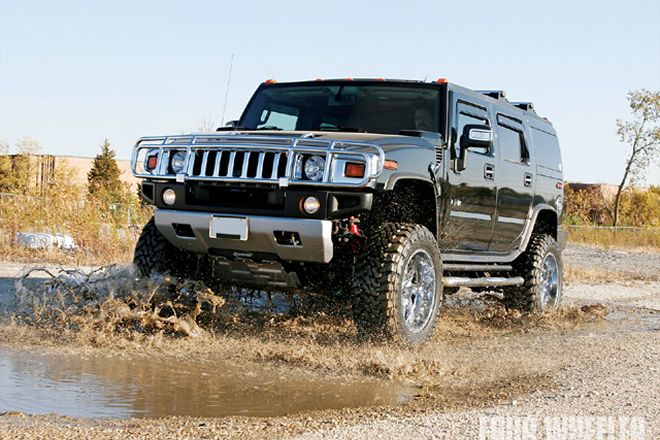
 Ken Brubaker
Senior Editor, Four Wheeler
Ken Brubaker
Senior Editor, Four Wheeler
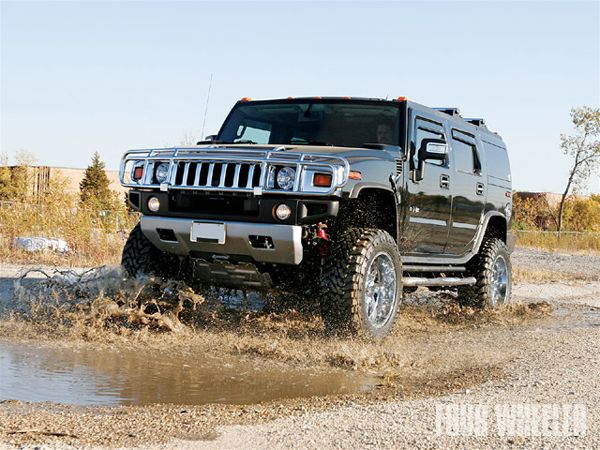
The Hummer H2 evokes a number of responses from people, ranging from envy to amusement to dislike. If you're a reader of Four Wheeler you know that we've tested H2s extensively, in both SUV and SUT forms, and we haven't been shy in pronouncing them to be some of the most off-highway-capable fullsize rigs available. They're designed with some of the best approach, departure, and rampover angles in the biz, and they come standard with an electric rear locker. All things us wheelers want and love. We fall into the envious category.
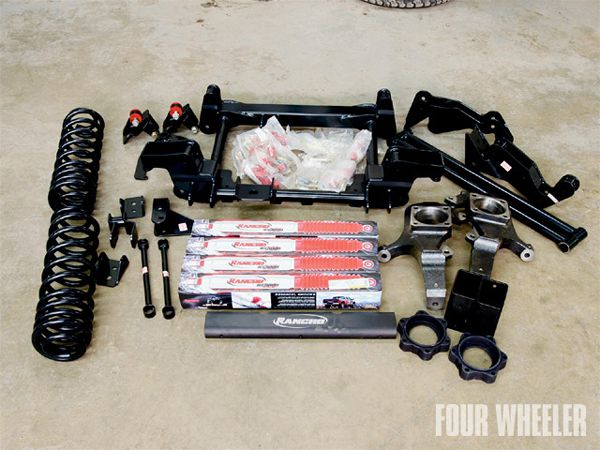 1. Here's the kit (RS6556) as it arrived. The owner of this rig chose the black finish, but the kit is also available in red. The H2 we lifted did not have the optional rear air-spring suspension, so new rear coil springs were included. For those H2s fitted with air springs Rancho offers a kit (RS6557) that includes aluminum air-spring spacers.
1. Here's the kit (RS6556) as it arrived. The owner of this rig chose the black finish, but the kit is also available in red. The H2 we lifted did not have the optional rear air-spring suspension, so new rear coil springs were included. For those H2s fitted with air springs Rancho offers a kit (RS6557) that includes aluminum air-spring spacers.
The aftermarket has responded to the H2 over the years, and we're not talking about chrome accessories, though there are most certainly enough of those things. We're talking about suspension kits that further enhance the H2's capabilities. One of those companies is Rancho Suspension, and this month we look at how its 4-inch kit for the H2 helps to modify the rig to make it an even better performer on the trail.
We know what you're thinking. You don't own an H2 and you never will. Well, this story may be relevant to you anyway because some of this suspension kit's architecture is similar to that found in other Rancho late-model GM light truck and SUV suspension systems. Rancho engineers like to say they're the "same parts, but different." For instance, the Rancho H2 subframe has similarities with the subframes used in other Rancho GM lifts. Another example is that the knuckles used in the H2 kit are the same used with the '01-'08 GM 2500 HD suspension system.
We installed this kit at Attitude Performance in Arlington Heights, Illinois, under a vehicle that had already been fitted with 37x15.50-20 tires. The vehicle had no lift, so the larger-than-stock tires were rubbing when the steering system was at full lock. The owner chose to install the kit to solve the problem. Here are the major components and installation highlights of the Rancho kit.
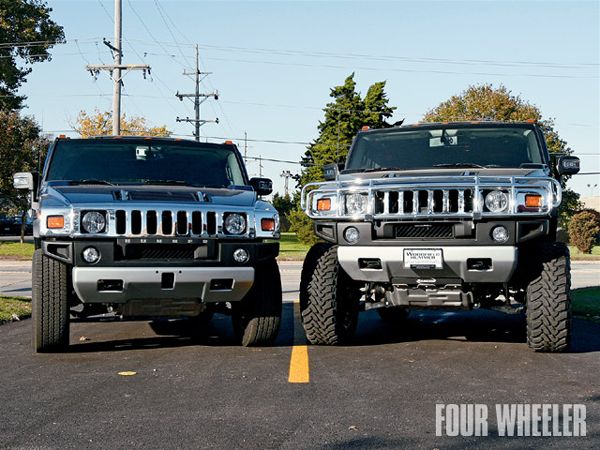 Here you can see the difference between a stock H2 (left) and the lifted H2.
Here you can see the difference between a stock H2 (left) and the lifted H2.
Bottom Line
Not only did the kit solve the tire-rubbing issue and improve angles important to off-highway travel, it improved the H2's performance on the RTI ramp. Before the kit was installed the H2 traveled 53.5 inches up a 20-degree ramp. This earned it a score of 436. After the install the H2 traveled 60.5 inches up the ramp to earn a score of 493.
The Rancho kit was developed using a 37x12.50R17 tire on a 17x10 wheel with 5 inches of backspacing, however it will allow use of up to a 40x13.50R17 tire on a 17x9 wheel with 6 inches of backspacing. We're digging the fact that no driveline or exhaust mods are required to install the kit and we like the overall simplicity of the kit and the fact that it blends nicely with the underbody of the rig. On a short drive after the install we noticed no weird handling and no driveline vibration issues.
This Rancho kit has an MSRP of $2,900, and that price includes shocks.
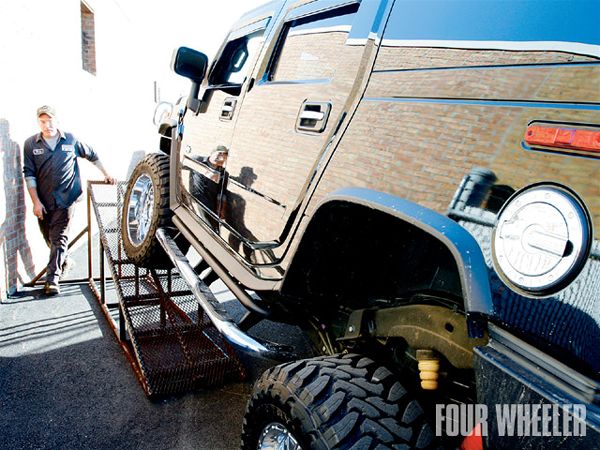
The new kit contributed to the H2 being able to travel 7 more inches up a 20-degree RTI ramp.








 PhotosView Slideshow
PhotosView Slideshow







